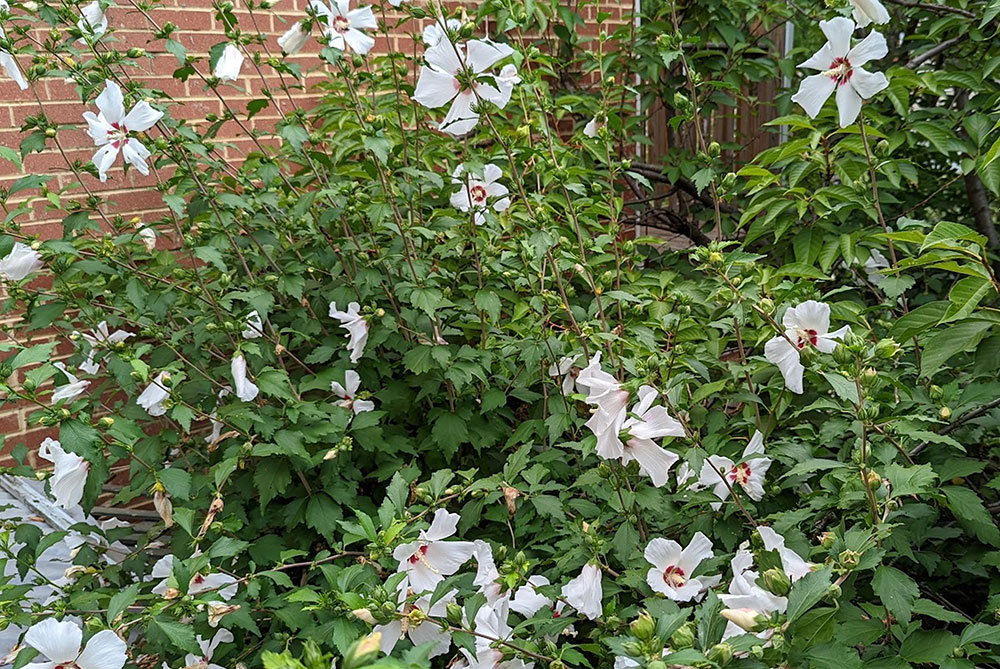 By Stephanie Cavanaugh
By Stephanie Cavanaugh
THE FIRST Rose of Sharon I met was 40-some years ago, behind a row house lovingly decorated in the worst possible taste. It was so ghastly it languished on the market for months as nearby homes with identical layouts were snapped up within days.
My soon-to-be-ex-husband was looking for a house, and though we were kaput he still trusted my eye. (It was a most amicable divorce). It’s nothing that an exhausting amount of elbow grease can’t fix, I told him. So he bought it.
Equally horrific was the garden. A gnomish rectangle surrounded by chain-link fence, with a 12-foot “arbor” made of metal pipe above the cracked concrete walkway to the back gate. Beside the back door was this tree, covered with flowers, in a funereal shade of purple. I shuddered. We chopped it down. It grew back. We chopped it down. It grew back. Nothing kills this damn thing, I thought.
What a great trait, I think now. As it turned out, it was only the context that made the plant so distasteful. The Rose of Sharon, or Hibiscus syriacus, as it’s fancily known, is a cold hardy variety of tropical hibiscus: How could I not love it?
It’s also at the top of my list of Best Plants for Idiots.
Rose of Sharon can be grown as a small or tall tree, a hedge, or a potted plant. It comes in shades of purple, pink, white, and bicolor. Flowering profusely in full sun, it still puts on a cheery show in dappled shade.
Like crape myrtle, it’s that rare flowering tree that’s in bloom from early summer until snap of frost, making it a great choice for constant color in the smaller garden. But unlike crape myrtle, which is excruciatingly slow to leaf out in spring—looking rather dead amongst the tulips and such—the Rose of Sharon leafs out early, popping with flowers in mid-June just as the crape myrtle begins to green.
A red-and-white one with a particularly beachy air, a Mother’s Day gift from My Prince 30-odd years ago, is now nearly three stories tall. That was the only plant that we purchased, though we’re now surrounded by them. In the main garden, one of its sports, as offbeat offshoots are called, is a delicate lavender—the colors tend to mutate. Other sports are planted along the alley fence, out front along the curb, and shared with friends for their gardens.
It’s a very polite self-propagation; the plant’s offspring never make a nuisance of themselves. Look along the base of one and you’ll probably find a stick of a sprout. Yank it up by the roots, dig a hole somewhere, plant it, and it shall grow.
Oh, not surprisingly, I was right about my ex’s house. It was charming once stripped of layers of wallpaper and filthy carpeting, and his replacement wife created a fantasy of roses above the arbor and bands of fairy-colored cosmos beneath the branches of the still-thriving Rose of Sharon.
